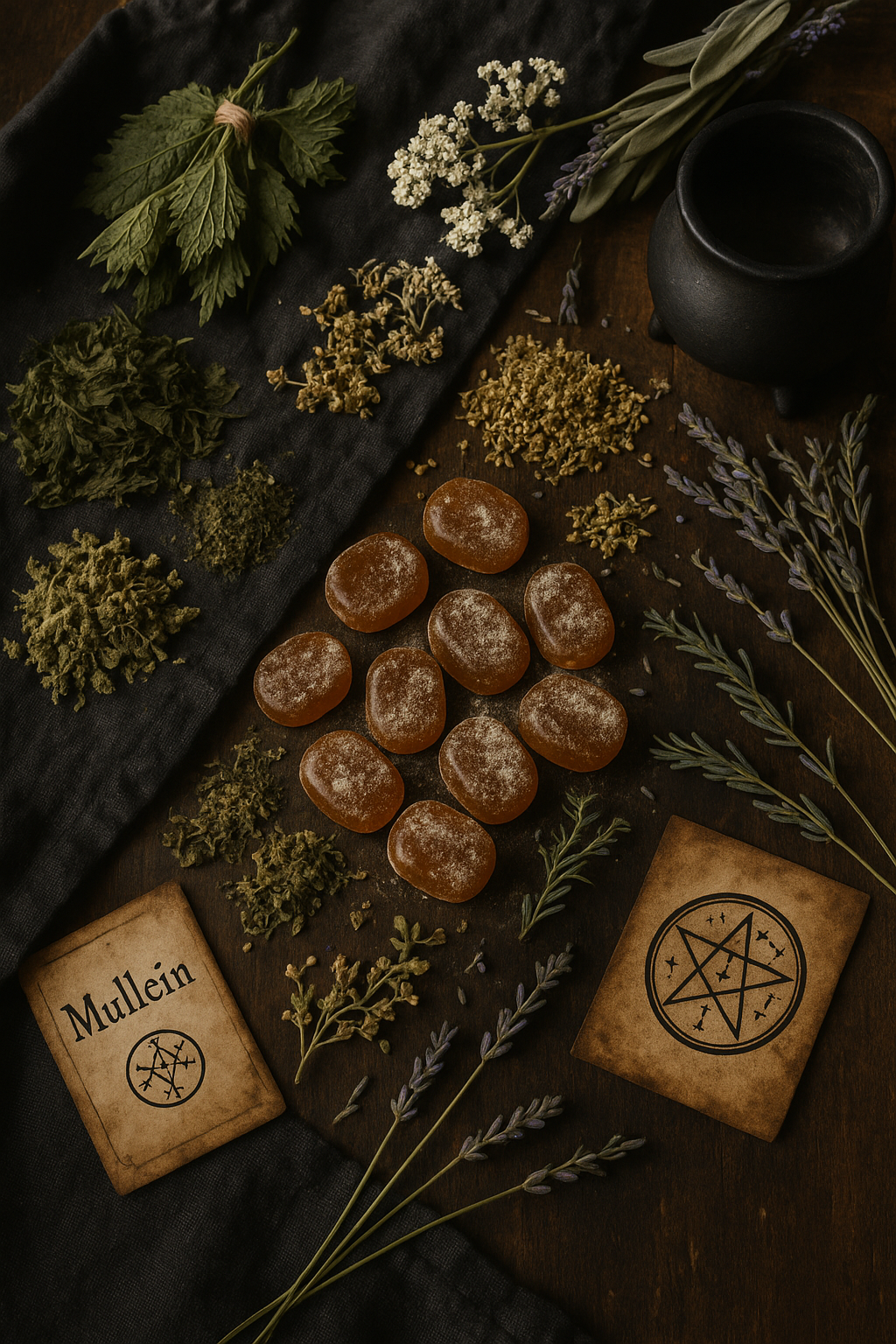Spring Allergy Candies
The connection between candies and herbal remedies goes way back—before candy was ever just about sugar and pleasure, it was medicine.
Ancient Roots:
In ancient Egypt, China, India, and Greece, herbs were often blended with honey to preserve them and make them more palatable. Honey was not only a sweetener but also a medicinal ingredient itself. These mixtures were used to treat everything from sore throats to digestive issues.
Medieval Europe:
During the Middle Ages, apothecaries and monks crafted “electuaries”—herbal powders blended with sugar or honey into pastes or lozenges. These were among the first medicinal confections, often used to soothe coughs or calm the stomach.
Renaissance & Early Modern Period:
By the 16th and 17th centuries, sugar became more accessible, and herbalists began making herbal jellies, lozenges, and pastilles. These were sold as remedies and became especially popular for respiratory issues—think of horehound, licorice, and slippery elm lozenges.
19th Century Apothecary Candies:
As pharmacology developed, the lines blurred. Cough drops, digestive mints, throat lozenges, and tincture-based sweets were sold in general stores and pharmacies. Think Smith Brothers or Ricola—both originated as herbal remedy brands.
Modern Revival:
Today, herbal candies are having a renaissance in herbalism and slow living spaces—used to deliver immune support, calm, digestion, and allergy relief in a gentle, accessible way.
Here’s a simple and tasty Spring Herbal Candy recipe specifically formulated to help ease seasonal allergies. It uses herbs that support the immune system, reduce histamine response, and soothe irritated tissues.
Spring Herbal Allergy Soothing Candies
Ingredients:
1 tbsp dried nettles (antihistamine, anti-inflammatory)
1 tbsp dried elderflower (anti-allergenic, decongestant)
1 tbsp dried mullein (soothes respiratory system)
1 tbsp dried chamomile (anti-inflammatory, calming)
1 tsp dried peppermint (clears sinuses, cooling)
1 cup water
1 cup raw honey or organic cane sugar (honey adds extra local allergy support if local)
1–2 tsp lemon juice (optional, adds vitamin C and flavor)
Powdered slippery elm bark or arrowroot (for dusting and demolding)
Instructions:
Make a strong infusion:
Combine all herbs in a small pot with the water.
Bring to a boil, then reduce heat and simmer covered for 15–20 minutes.
Strain the liquid through a fine mesh strainer or cheesecloth. You should end up with about 1/2 cup of concentrated herbal tea.
Cook the candy:
In a saucepan, combine the herbal tea and honey (or sugar).
Heat over medium heat, stirring gently, until it reaches 300°F (hard crack stage). Use a candy thermometer.
Be careful not to over-stir or scorch. It may foam—lower the heat slightly if needed.
Add lemon juice (if using) and stir quickly right before removing from heat.
Pour into molds:
Quickly pour the mixture into silicone candy molds or onto a parchment-lined sheet to break into pieces later.
Let cool and harden completely.
Dust and store:
Dust candies with slippery elm bark or arrowroot powder to keep them from sticking.
Store in an airtight container in a cool, dry place.
To Use:
Suck on one candy as needed for seasonal allergy relief. These are soothing to the throat and help reduce sneezing, itching, and congestion.


